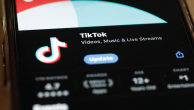A look at the flow of investment dollars suggests a bull market in the new digital news arena.
Last year, Rupert Murdoch took a $70 million share in Vice Media, a company that is profitable and projecting that it will double topline revenue from 2013 to 2014. Mashable recently raised $14 million to bolster its newsgathering, including a $700,000 investment from a major legacy media operation—the Tribune Co. NBC Universal bought a minority share in the Re/Code operation launched in January by Walt Mossberg and Kara Swisher. And earlier this month, Henry Blodget’s Business Insider reported raising $12 million from a group of investors that includes Amazon.com founder and new Washington Post owner Jeff Bezos.
And that pales in comparison with the $250 million eBay founder Pierre Omidyar has committed to his new First Look Media operation.
But beneath this flow of cash and optimism, some hard questions lurk. A central reason for the economic crunch afflicting many legacy news organizations is that their digital product—while attracting eyeballs—has not produced enough revenue, particularly advertising dollars. (In 2012, the last year for which data are available, digital ad revenue at newspapers grew at a disappointing 3.7%). That leads many observers to wonder if digital native outlets will succeed where legacy digital platforms have had so much trouble.
Even enthusiastic supporters of the explosion of digital news content don’t have an easy answer to that question. Some of them voice doubts, both privately and publicly.
[business model]
For all of the proliferation of smaller digital news operations in recent years, the financial underpinnings of many of them are fragile. Of the outlets surveyed by Pew Research for its nonprofit report, nearly half reported annual revenues of $250,000 or less. Nonprofit news organizations are working to diversify their revenue streams and reduce their reliance on big grants, with 61% of the survey respondents having started with a seed grant that accounted for at least one-third of their budget. But that is not an easy task and Pew Research identified about two dozen such outlets that had shut down or gone dormant in the period between 2008 and 2012.
Some of the smallest organizations—which support only one full-time salary or even less—may be labor-of-love enterprises that could disappear if and when the enthusiasm and energy of the founder/operator diminishes.
One conspicuous failure in local digital newsgathering is Patch, a group of community sites founded in 2007 and later purchased by AOL as part of an ambitious local news enterprise that at one point reached nearly 1,000 in number. The recent rounds of cuts, the latest implemented after AOL sold Patch in January, have reduced the workforce there by a reported three-quarters or more.
Many of the more prominent digital news organizations interviewed by Pew Research declined to talk in any detail about their financial health. Some, including Gawker and the Center for Public Integrity, have reduced staff at various points in their history. And for a number of them, profitability remains elusive.
Media analyst Ken Doctor has reported that at $100 million in revenues, The Huffington Post is doing no better than “flirting with profitability.” At his First Look Media enterprise, Pierre Omidyar has indicated that the break-even point may be at least five years away and may require more than his announced $250 million investment. At Quartz, the goal is to break even, or perhaps turn a small profit, in the next calendar year. According to press accounts, Global Post is not yet profitable. Henry Blodget’s Business Insider turned a profit in the fourth quarter of 2013, but he says it is more focused now on investing than return.
“Can you create a viable business model to support these ventures?” asks Quartz’s Kevin Delaney. “My experience says ‘yes.”
And while many of these organizations talk about hiring young people with more digital acuity, Slate’s David Plotz wonders if there is a business model to support them when they age, have families and require a larger salary.
[is]




